I received an email from Scott in Michigan, with photos and a description of the process of fermenting whole heads of cabbage, as he observed it in Romania. See below for photos.
“I was dating a Romanian girl a couple years ago, which was my first introduction to good living. Our trips to the mountains and our visits to relatives of relatives who quite literally lived by their own two hands, and wasted nothing, changed my whole world view.”
“This is a series of pictures her mother sent me of her method for making ‘Romanian sauerkraut’ or Sour Cabbage. It’s made this way so the leaves remain whole for wrapping the Christmas ‘sarmale.’ A traditional Christmas staple of pork and cabbage. Absolutely amazing results. The best fermented cabbage I’ve ever had by far. I ate so much of this the months I spent there.”
“I do not know the exact herbs but they are not exotic, and the odd looking fruit is quince … the others are obviously horseradish and normal corn. They use the spigot to release the liquid created at regular intervals. The core of the cabbages are removed, then packed with salt… It is weighted down with 2 wood slats and a stone, then covered with the lid.”

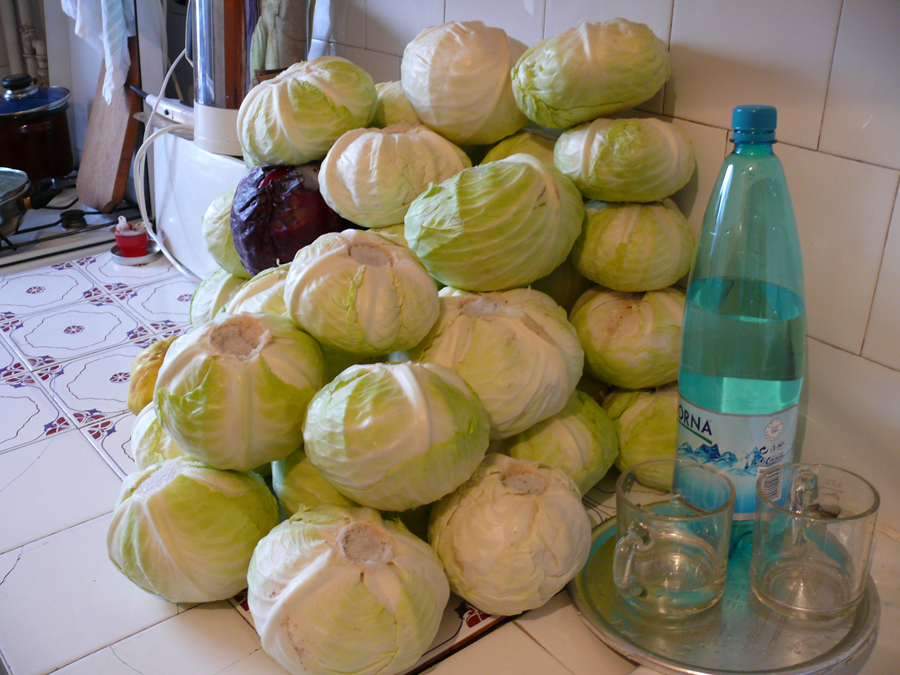


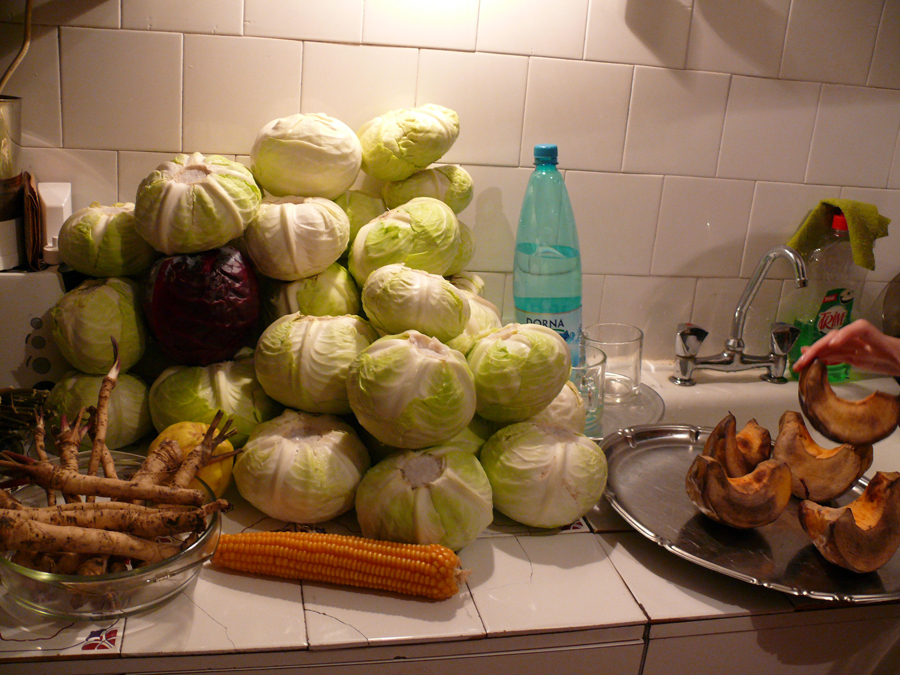
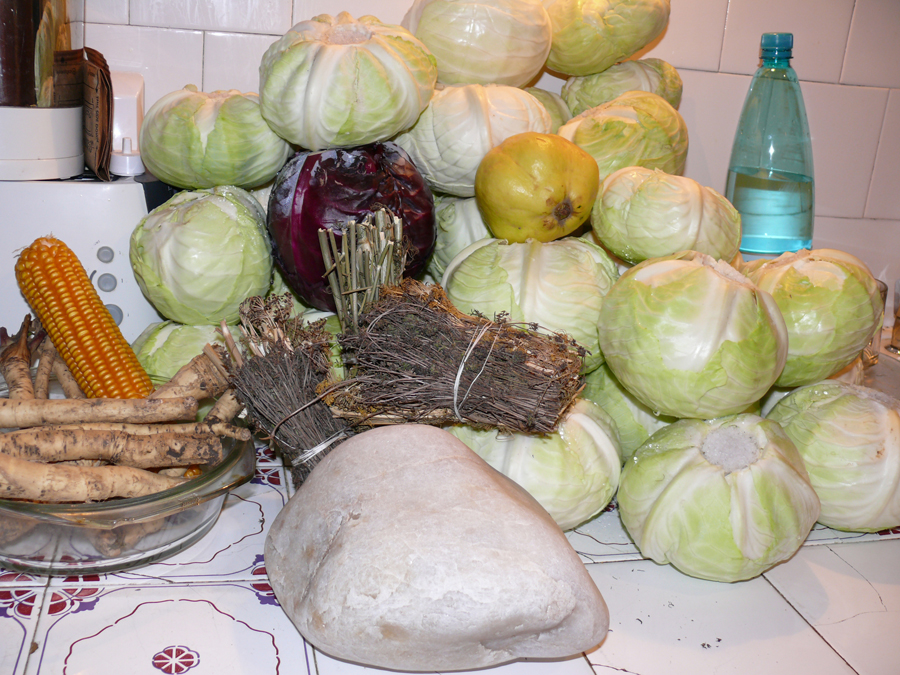



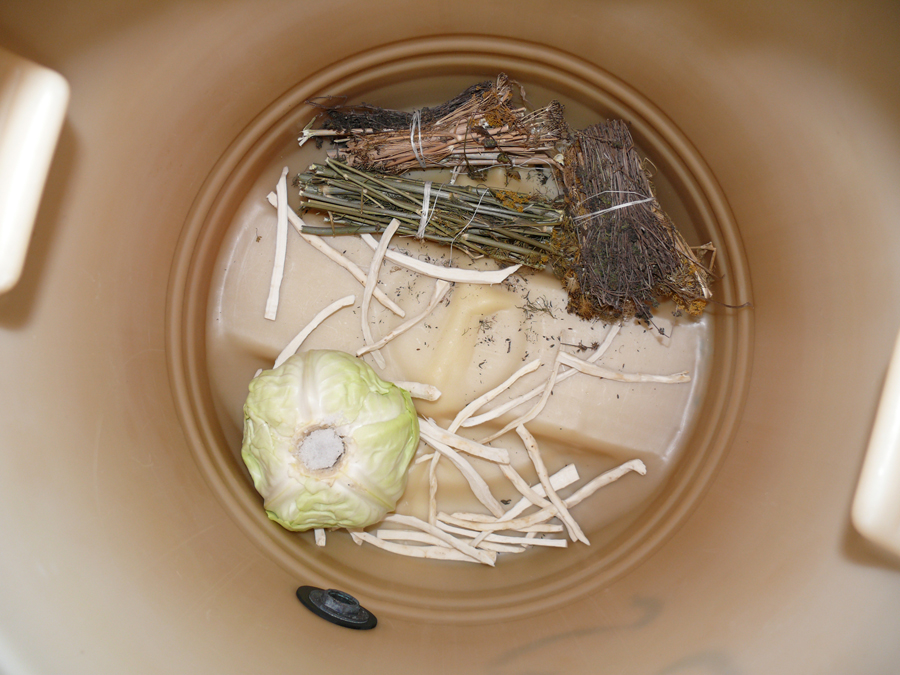
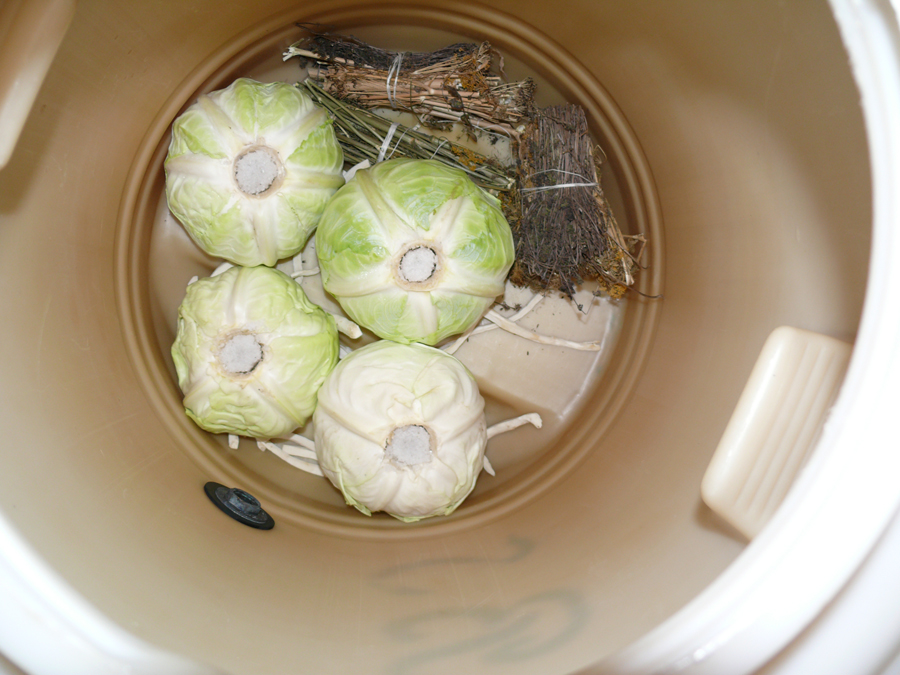
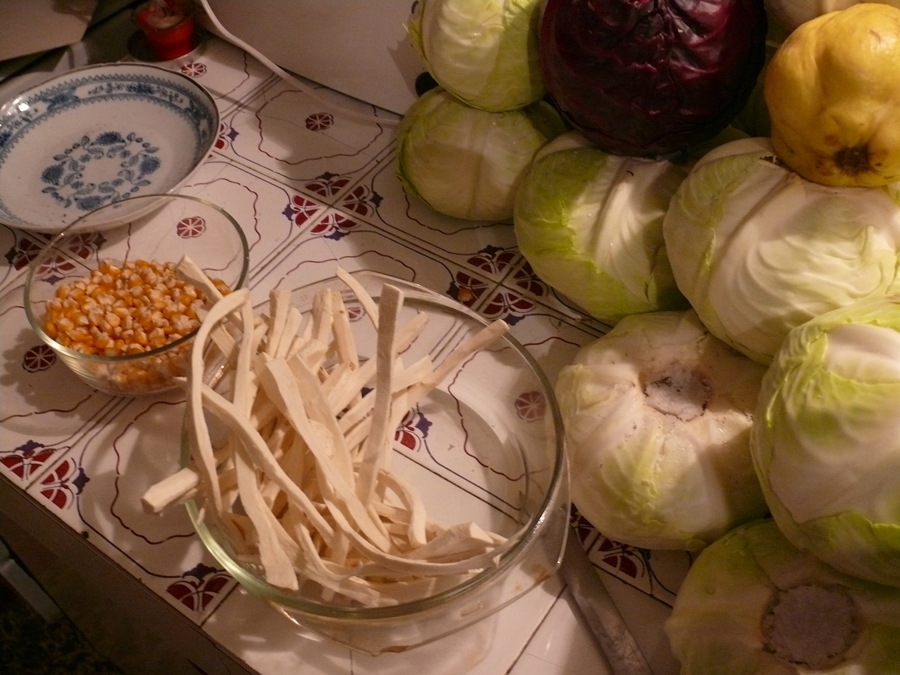


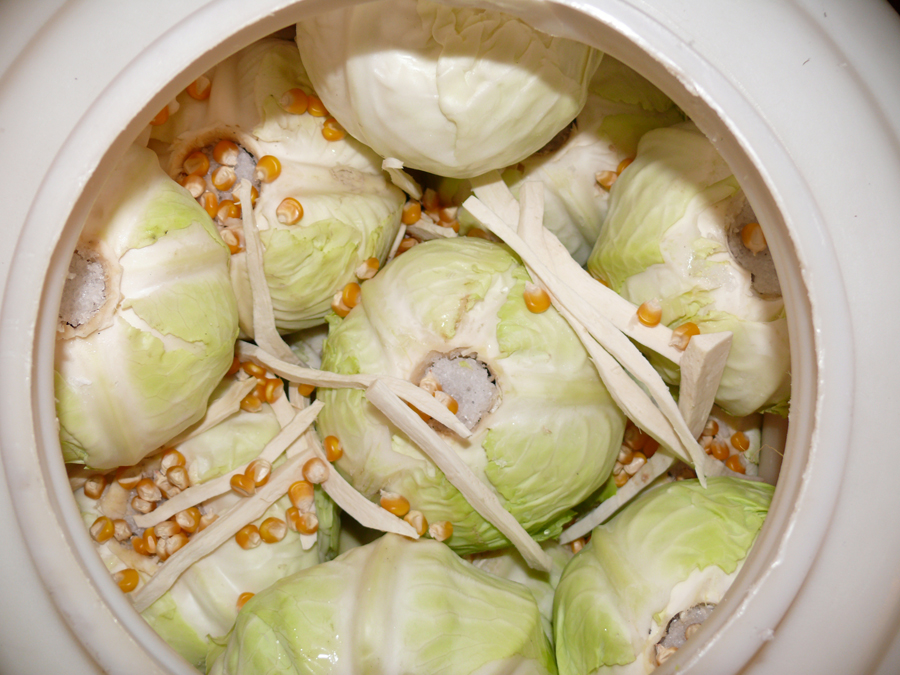

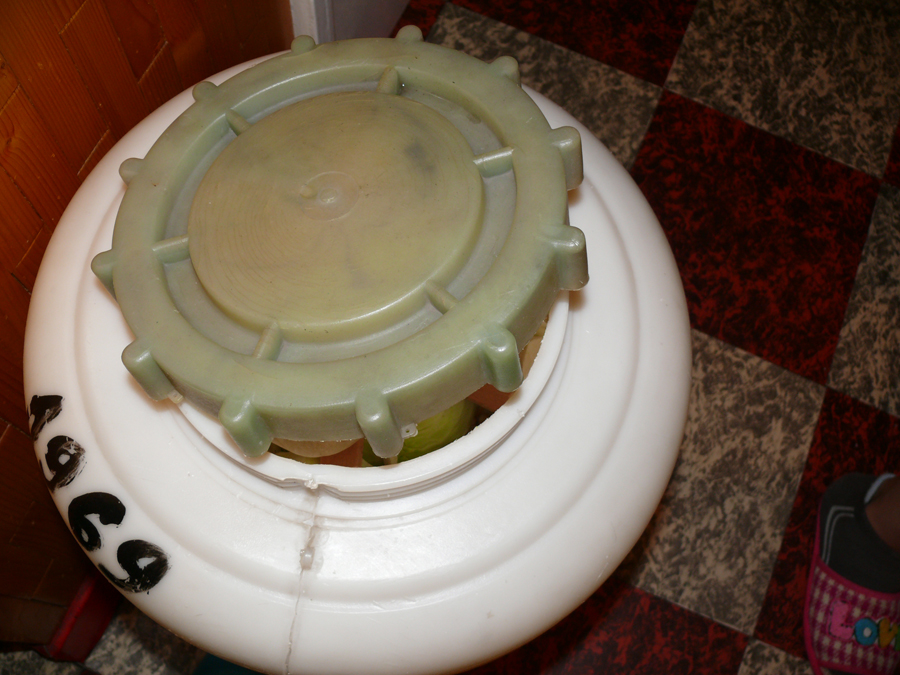
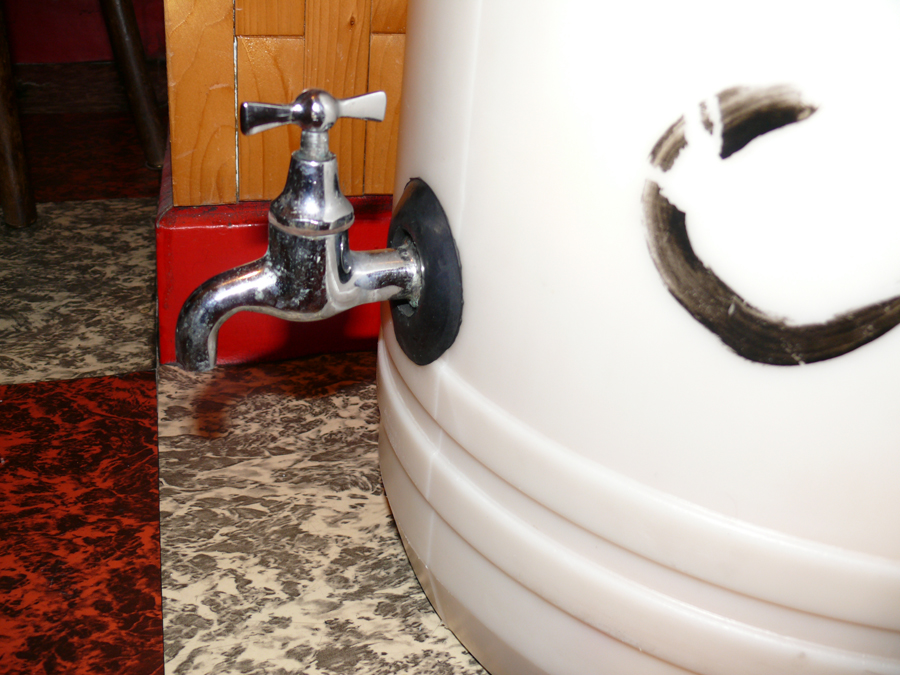

 Click For Comments
Click For Comments
AMAZING. Thanks!!!
I am eager to learn this way of fermenting.
this is super neat! googling around, i find also recipes for croatian “kiseli kupus”, which seems to be the same sort of thing. but these pics are awesome! i’m curious about the herbs… and what the corn does. 🙂
i am so glad i read about this here. i am romanian and most of the people who live here do this “sauerkraut” (varza murata) every autumn. actually,it’s impossible to meet a woman who didn’t make this at home every year.the herb you see there is dried dill. it’s quite a complex process making this. you have to blow inside the liquid with a flexible pipe so it can ferment at its best. the liquid it’s going to be very salty, but it works so well on your gut.
My Romanian neighbors said corn is to give cabbage a golden color and can use small amt of beet if you want it pink instead. They also ferment melon and quince.
Neighbors also said the horseradish root was to make the cabbage crisp in texture.
It is very interesting !
I have a question : why do they remove the liquid ?
Is it for use in something else, or is it better for conservation ?
The liquid is added back in at the top. The idea is that salt can fall out of solution and collect at the bottom, so this recirculates the salt.
What an exciting process, fun commentary, and great photos.
Thanks.
It,s better for ferment!
What a fascinating look into a very practical method. Thanks so much for sharing this!
Nice picture of hole proces but I heard that best sour cabbage Is prepared in oak barrels for best taste.I am polish and love “sour food” special all the time I’m searching for good sourdough bread. Today is hard to find good bakery. “https://en.wikipedia.org/wiki/Sourdough” I make sour soup esence for “Żurek” and for christmas “barszcz” beet soup -sour beet esence for soup color and taste and sour cucumbers “ogórki kiszone” I love to eat “ogórki małosolne” this is the same like sour cucumbers but you must eat them during first period of souring next day or 2 to 4 before they become sour.
My grandmother and parents are Romanian. Saurkraut was made every fall in our home. The herbs they used were Dill and Summer Savoury. We also add a handful of grapes and a handful of dry navy beans to speed the fermentation. We had an oak barrel but when it fell apart, we began using plastic.
Great!! Thank you so much for sharing the proces! (I´ll try to make it but using brussels sprouts instead of big cabbages, just to make an atempt). Bye!!
hi i am romanian, living in romania. i made sour cabbage since so long that i have forgotten.
if somebody wants to make this naturale kind of fermentation first should know some more elements.
1) i don’t remove anything from the cabbage except bad leafs.
2) horseradish keep the cabbage firm. it should be there for sure.
3) the corn beans give a little bit of yellow colour if the beans are really yellow. you may skip it or replace with 1 or 2 little beetroot/s adding just a little pink to the cabbage.
4) the dill seeds and sticks are there for some flavour. don’t miss them or replace the sticks (if find no such sticks in usa) by more dill seeds.
5) the stone is not necessary. you can set 2-4 wood sticks just beneath the neck of the barrel and fill with liquid up to top, to cover everything.
6) the liquid (saramura) is made or at least i made (and most the people i know are doing the same) with a very full tablespoon of salt (that salt special for pickles) for each liter of water. stir well till all the salt is dissolved.
7) the barrel should bee kept in mild warm place (where i keep it, temperature is around 10-15 celsius, 50-59 fahrenheit. we start the process usually between 1-15 of november each year. the cabbage gets ready in 3-4 weeks depending on outside temperature.
8) very important if not the most important thing is to blow the liquid from time to time.
now what does it mean! during the fermentation process the liquid tends to loose its fluidity, tends to become thicker and more viscous. don’t let this happen because it damages the cabbage. you won’t eat it at last. there are numerous techniques to prevent that. i use a plastic pipe which i push close to the bottom of the barrel and put a funnel in top of it. i use a hose to pour liquid out of the barrel into plastic bottles of 5 liters (i buy mineral water in this bottles and keep a few of them for this destination). don’t fill full, just let 15-20% empty, let’s say in 5 litter bottle just fill 4 liters. then put the lid and vigorously shake the bottle till you feel pressure inside and see a lot of foam. release the gas by uncovering the bottle. repeat the steps till no more gas is liberated or very few. now pour the again watery liquid back into the barrel trough the funnel. this will go to the bottom of the barrel whereas you pull out new liquid from the first third on the top. you go one further with another bottle. i rad prefer to to take out 4-6 bootle first, the shake them, then pour them back. how much water one should take out and shake depends on the status, if it healthy i think 1/3 is enough, but if it is not fluid anymore (ill) all the water should be treat as described. and you have to repeat the process sooner than in case of complete health. i had to perform this operation twice every year for the last 20 years ore more, before, being inexperienced i use to perform the blowing 3 or 4 times per season because once i forgot and the cabbage got ill and that time was awful.
9) have you any ideea how it smells when you “play” with the liquid? no? you will find out! but when the cabbage is ill? i refuse to remember so don’t let it go ill!
good luck!
I got myself a 55 gallon plastic barrel that was used to store olives in. Cleaned it out good then used the leftover cabbage I had from making sauerkraut to make these whole fermented cabbage heads.
I followed these directions:
http://aem.asm.org/content/10/1/86.full.pdf
So I cored the cabbages, weighed them and wrote that number down. Then I placed maple boards and a rock to weight them down. I took an empty milk jug and filled it with water, weighed that. I continued to pour gallons of water over the cabbage, until it was covered. I took the number of gallons of water, multiplied it by the weight in grams of 1 gallon of water. Added this number to the total weight of all the cabbage heads I had in the barrel. Then multiplied that final number by 3.5% and that’s how much salt I added to the container.
There definitely is a difference is smell between this and sauerkraut, this was stinkier IMO. My impression of the final product was it was a little salty for my liking. The cabbage leaves also wanted to keep their shape and wouldn’t soften up when cooked. We made stuffed cabbages with it and you would think the cabbage would be so tender and fall apart nice but it was tough! Not sure if I did something wrong or if this is to be expected it did have somewhat a good flavor but over powered by salt.
Mwhhah! Just the look of it makes me saliving! Thank you so much for the love of vegetables dealt with our own hands. Blessed be! Jackie
Nice web site you have right here